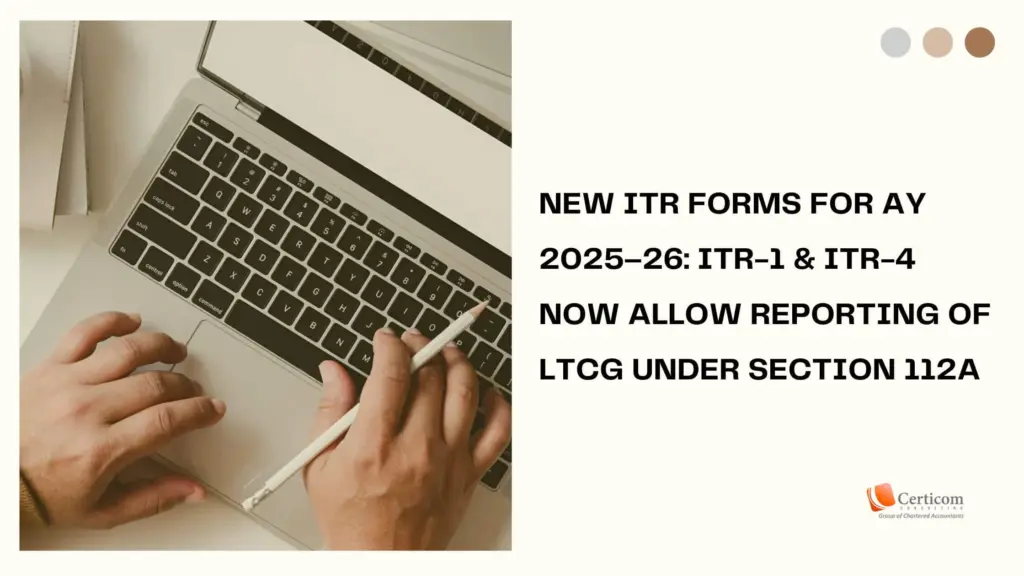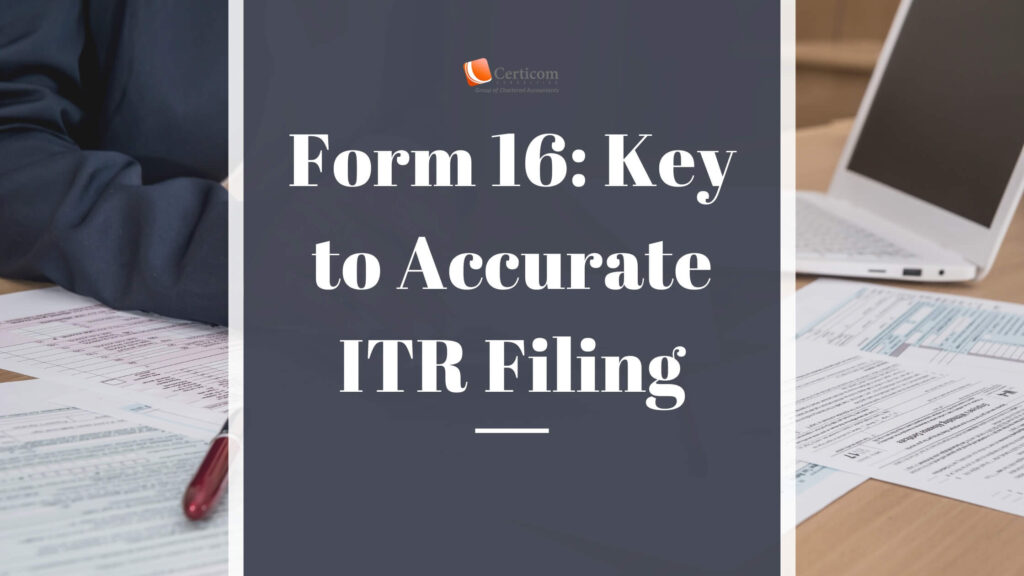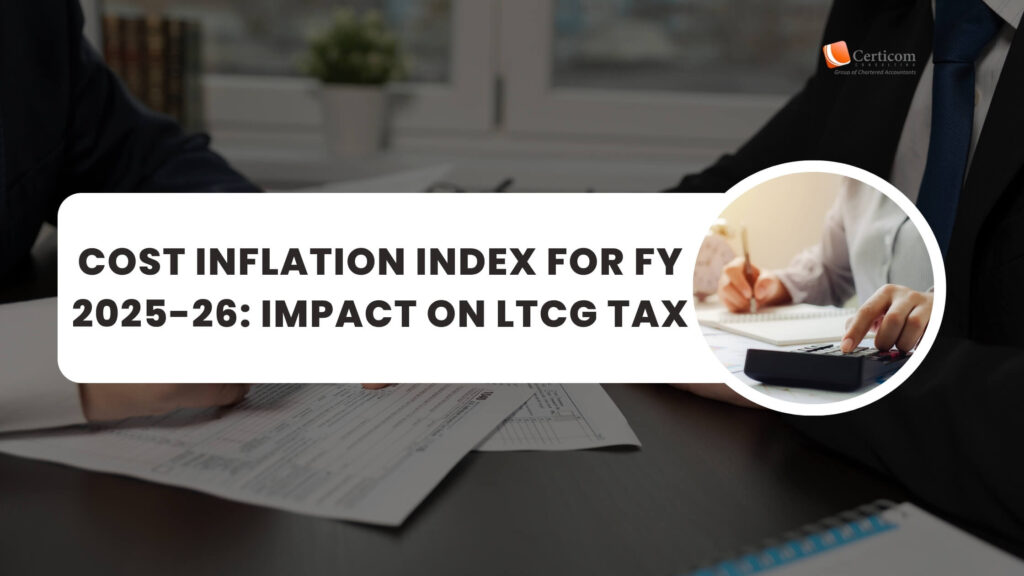New ITR Forms for AY 2025–26: ITR-1 & ITR-4 Now Allow Reporting of LTCG under Section 112A

The Income Tax Department has officially notified the income tax return (ITR) forms for Assessment Year (AY) 2025–26, corresponding to Financial Year (FY) 2024–25. A key highlight of this year’s updates is the inclusion of a provision to report long-term capital gains (LTCG) under Section 112A directly within the simpler ITR-1 (Sahaj) and ITR-4 (Sugam) forms.
Capital Gains Disclosure Simplified
Until now, even small amounts of LTCG under Section 112A required taxpayers to use the more detailed ITR-2 form. However, starting this year, taxpayers with long-term capital gains not exceeding ₹1.25 lakh and no capital losses to carry forward or set off can report such income directly in ITR-1 or ITR-4.
This amendment is aimed at simplifying the compliance process for small investors and salaried individuals by reducing the need to file more complex return forms unnecessarily.
Who Can File ITR-1 and ITR-4?
ITR-1 (Sahaj): For individuals with total income up to ₹50 lakh, having income from:
Salary or pension
One house property
Other sources (like interest)
LTCG under Section 112A up to ₹1.25 lakh
Agricultural income up to ₹5,000
ITR-4 (Sugam): For individuals, Hindu Undivided Families (HUFs), and firms (other than LLPs) with income up to ₹50 lakh from:
Business or profession (under presumptive taxation)
LTCG under Section 112A up to ₹1.25 lakh
Understanding Section 112A
Section 112A of the Income-tax Act deals with long-term capital gains arising from:
Sale of listed equity shares
Equity-oriented mutual funds
Units of business trusts
For these assets, gains are considered long-term if they are held for more than:
12 months in the case of listed securities, or
24 months for certain other assets
Gains exceeding ₹1 lakh under this section are taxed at a concessional rate of 10%.

Additional Reporting Requirements in ITR
Apart from disclosing income, taxpayers must report the following transactions if applicable:
Foreign travel expenses exceeding ₹2 lakh in the previous year (for self or others)
Electricity expenses exceeding ₹1 lakh
Cash deposits exceeding ₹1 crore in current accounts
These disclosures help the Income Tax Department identify high-value transactions and assess the taxpayer’s financial profile.
Role of AIS and Form 26AS in Return Filing
Before filing their returns, taxpayers should carefully review:
Annual Information Statement (AIS): A comprehensive view of financial transactions reported by banks, mutual funds, and other financial institutions.
Form 26AS: A tax passbook showing TDS/TCS details and other specified transactions.
Taxpayers are encouraged to verify these forms and provide feedback in case of discrepancies to ensure accurate filing.
Note: Updated data in AIS and Form 26AS is generally available in the first week of June, since the deadline for TDS return filing for the January–March quarter is May 31.
Filing Portal
Taxpayers can file their ITR online through the official Income Tax e-filing portal:
Read More: Selling Agricultural Land? Here’s How to Save Capital Gains Tax Legally
Filing Portal
The move to allow reporting of certain capital gains in ITR-1 and ITR-4 is a welcome change, simplifying tax compliance for millions of small investors. With the use of AIS and Form 26AS, taxpayers can now ensure more accurate filings with reduced manual effort. It’s advisable to wait until June for updated TDS data before final submission, especially for those with capital gains or high-value transactions.
Related Post
Cost Inflation Index for FY 2025-26: Impact on LTCG Tax
Loan Interest Deductions: How to Claim and Avoid Tax Scrutiny
Book A One To One Consultation Now For FREE
How can we help? *




